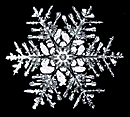


I was first introduced to the popular science writings of Dr Duncan C. Blanchard when I was an undergraduate meteorology student contemplating which field of specialization to follow. My love for thunderstorms made me partial at the time to storm research and cloud physics. In the campus bookstore, I had found several small books by Dr Louis J. Batten, whose book The Thunderstorm I had read and enjoyed before entering university. The additional titles on cloud physics, severe storms and weather radar by Battan were published as part of the Science Study Series a landmark venture of Doubleday Anchor and, for weather topics, in association with the American Meteorological Society. In addition to Battan's books, there were several others written by authors specializing in other areas of meteorology such as the upper atmosphere and weather and health. Needless to say, I delighted in all these books which still grace my library shelves.
One of the Series that particularly drew my attention was Duncan Blanchard's From Raindrops to Volcanoes. This book focused on the story of his research into many areas of rain formation processes, including the origin of cloud condensation nuclei. In an odd twist, the book's discussion on the role of breaking ocean waves in the production of cloud condensation nuclei fascinated me so much that I eventually decided to focus on micrometeorology and air-sea interactions rather than cloud physics.

Another book I found at the time was a picture book entitled Snow Crystals by W. A. Bentley co-authored with US Weather Bureau meteorologist W. J. Humphreys (originally published in 1931, it had been reprinted by Dover Books). The books contains over 2,000 photomicrographs of snow crystals categorized by common shape features. The brief account of how these photomicrographs were taken by Bentley coaxed me to seek out more information on Bentley and his work. Since that time, I have read many articles on Bentley in a variety of magazine and sought some of his technical papers in the archives of Monthly Weather Review.
Thirty years have since passed and again Duncan C. Blanchard and Wilson A. Bentley have come into my life with the publication of Blanchard's book The Snowflake Man: A Biography of Wilson A. Bentley. Obviously, Bentley's story fascinated Blanchard as it had me, for he spent many years tracking down personal information on Bentley with the intent of one day telling his full story. In writing The Snowflake Man, Blanchard relates the story of an amazingly complex man and his immense contribution to atmospheric sciences, a contribution made away from government and university centres and essentially without outside financial support.
In telling Bentley's story, Blanchard saw in him something deeper than just an artist, photographer, nature observer and scientist. In the Preface, he writes:
"Of all the reasons I had for writing this book, there is one that must be mentioned. While Bentley saw the snow crystals as a metaphor for beauty on earth, I saw Bentley himself as a metaphor for every person, be it ourselves or one of our neighbors down the street, who has been laughed at or ridiculed for wanting to pursue a new idea."
Wilson Bentley was a complex man beneath the image of New England farmer and much more than just an innovative photographer. The Snowflake Man is a marvellous, detailed account of the life and work of Wilson A. Bentley. Piecing together Bentley's life was made more challenging since few of Bentley's personal letters have survived, burned by a family member after his death because she felt "his personal letters were his business," This forced Dr Blanchard to draw on his talents as a scientific investigator in writing this biography.
Wilson A. Bentley was a self-educated man who drew his livelihood mostly from his family's farm. But each winter, his passion for observing and photographing the delicate crystal structure of snow became an obsession. His father and brother could not understand why he wasted his time "fussing with snowflakes" and neighbours considered him "a bit cracked." But his mother understood the delicate balance of artist and scientist in him and encouraged Wilson to follow his own path in life.
We have all heard the saying: "No two snowflakes are alike." We have Wilson Bentley to thank for it, for he spent a lifetime pursuing that second identical crystal. When Bentley died in 1931, he had painstakingly photographed more than 5,000 snow crystals over a nearly fifty-year period and never found two alike.
Blanchard also weaves the Snowflake Man's achievements into the context of what was known about snow and rain formation at the time. This includes a short history of the theories of snow and rain formation prior to, and contemporary with, Bentley's work. Indeed, Blanchard often remarks that Bentley was a voice crying in the wilderness for scientists to take his photographs and other experimental results and further the understanding of these processes.
Blanchard's portrayal enabled me to form a new and deeper impression of the man beyond the photographs. In the popular photographs of Bentley at work that I had always seen (such as the one on the book's cover), Wilson Bentley is usually portrayed standing behind his photographic apparatus in the open air, well-dressed in suit, dress coat and tie. While Bentley was one to formally dress for social occasions, he generally photographed his snow crystals wearing warm work clothes. (He was not, however, above racing out of a social function on the first hint of snow in the air.) And he never worked totally out-of-doors,. his "studio" an unheated workshed adjacent to the farm house.
But in 1921, reporters and a documentary film crew arrived at the Bentley house in Jericho, Vermont to write stories and produce a newsreel of his work. The bulky movie cameras, however, could not fit into the shed with the "snow camera," and Bentley was persuaded to move the equipment outdoors for effect and convenience. And, of course, Bentley would not think of appearing in a public forum unless properly dressed. The still photographs showing Bentley "at work" with which we are most familiar are, thus, a far cry from the true picture.
Wilson Bentley was both an artist and a scientist, a lover of beauty in many forms, and Blanchard interweaves both sides of his personality throughout the book. Bentley not only strove to photograph the most splendid of nature's handiwork, but also to exhibit his work to the people whenever possible. Thus, the solitary photographer eventually became the lecture circuit performer, extolling the beauties of nature to audiences around New England. Wilson's artistic side (in addition to the marvellous crystal photographs) is also apparent in his published writings. In his 50 known general interest pieces and 11 technical papers, he could not help but write with a poetic style showing his love for the beauty of the snow. For example,
"Every crystal was a masterpiece of design; no one design was ever repeated. When a snowflake melted, that design was forever lost. Just that much beauty was gone, without leaving any record behind."

Unless, of course, that snow crystal had fallen on Bentley's collection board and its life recorded on a photographic plate.
In addition to Bentley's work with snow, Blanchard give us some insight into his other experiments and photographs of atmospheric moisture forms (dew, frost, etc). Bentley recorded the local weather daily, added storm details into his photographic log, and kept a nearly 50-year record of aurora sightings. He also developed an ingenious method of studying raindrop size.
Bentley had originally intended to determine raindrop size by photographing the depth of the impact craters made on a bed of wheat flour and relating crater depth to drop size. When he found that small doughballs collected at the bottom of the container, Bentley quickly realized that the size of the doughball related to the size of the raindrop (and then devised an experiment to prove this). This allowed him to observe that rain fell at times with two different dominant size ranges in a single storm and to speculate on processes at work inside the clouds above that might account for such a distribution.
Finally, The Snowflake Man is also the life story of a man who lived and worked within a small Vermont town at the turn of the last century and thus gives a glimpse of life during that period. Therefore, I recommend this book as a story not only of scientific achievement but as a piece of Americana and a testament to those fascinating individuals whose focus does not waver despite odd looks and cutting remarks from family and neighbours.
Once again, Duncan Blanchard has captivated me with his clear writing and ability to spin the fascinating story behind the scientific pursuit. The Snowflake Man is one book I will treasure highly in my weather library for years to come.
Keith C. Heidorn, PhD, ACM
THE WEATHER DOCTOR
November 3, 1999